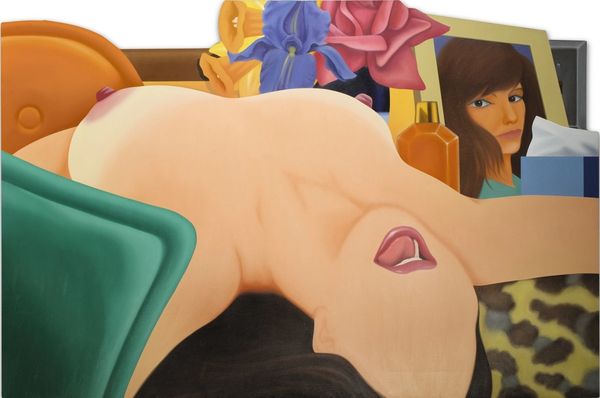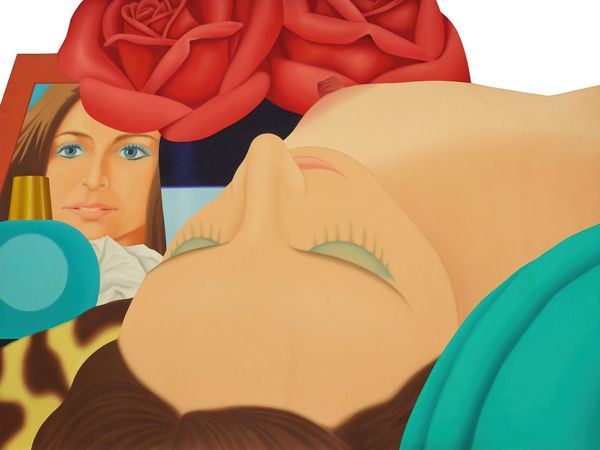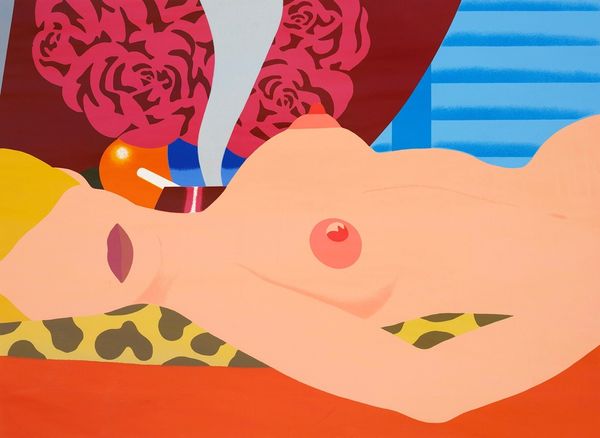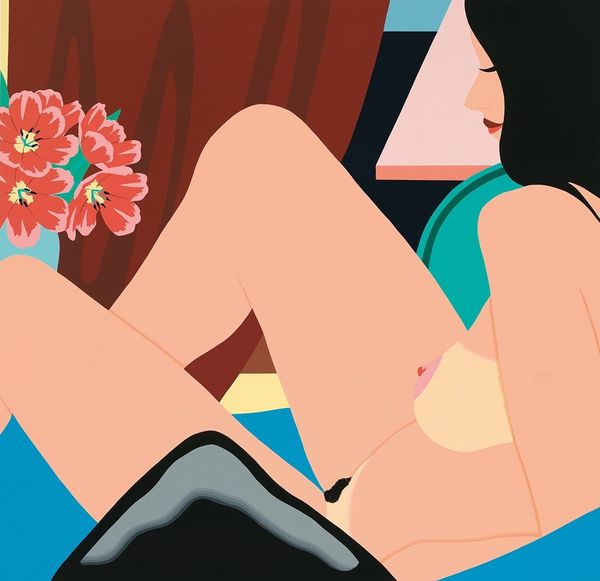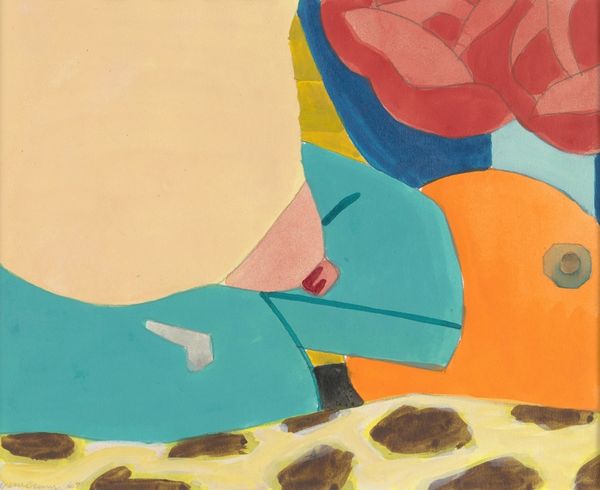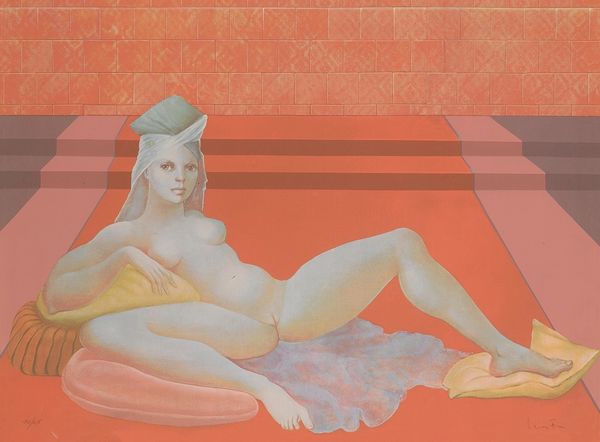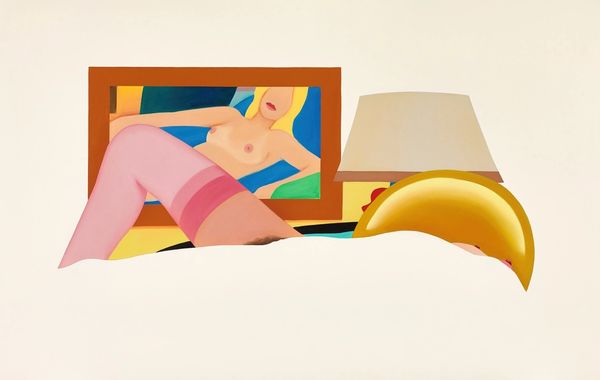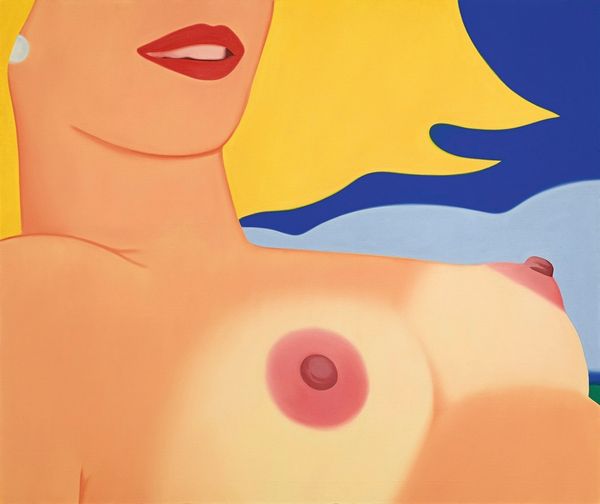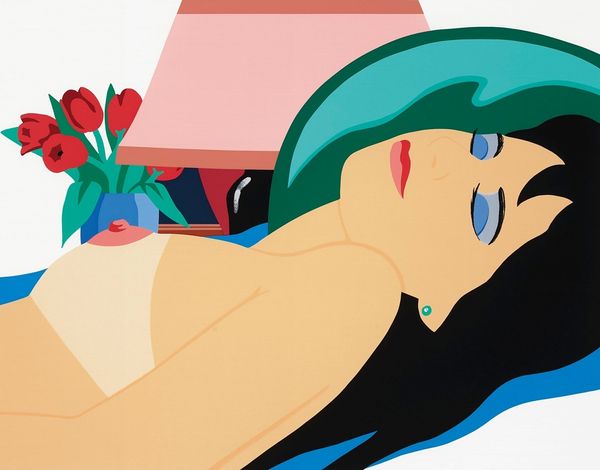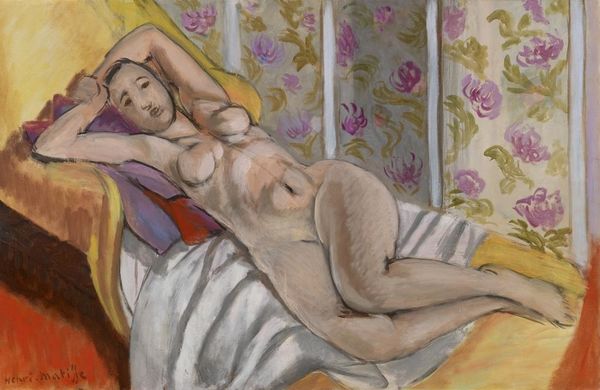
Copyright: Modern Artists: Artvee
Curator: So, here we have Tom Wesselmann’s "Big Study for Long Delayed Nude," worked on from 1967 to 1975, rendered in acrylic. What strikes you about it? Editor: The flatness and the colors are really eye-catching. It definitely feels like Pop Art. What interests me, though, is that it seems to be about mass production even as it represents the artist's studio and his supposed muse. What do you see in this piece? Curator: It's interesting that you pick up on the tension between mass culture and studio production. I see this painting as a commentary on the commodification of the female body. The smooth, almost airbrushed, application of acrylic – chosen specifically for its ability to mimic industrial finishes – renders the nude as a mass-produced object. The repeated image of the woman further reinforces this. What does the choice of such common, readily available acrylic say to you? Editor: That's fascinating! Using such accessible material demystifies the artistic process, collapsing the distance between "high art" and everyday commodities. Is he implying that artmaking itself has become industrialized, just another form of manufacturing desire? Curator: Precisely! The medium becomes the message. It reflects the societal structures influencing the work. By choosing a distinctly commercial material, he underscores the consumerist lens through which we view both art and the body. Editor: I hadn’t considered the social implications of acrylic paint itself before, that really changes how I see Wesselmann’s practice. Curator: Indeed. By exploring the material components and considering production and consumption, we've broadened our understanding. There are so many ways to interpret works when you consider art this way.
Comments
No comments
Be the first to comment and join the conversation on the ultimate creative platform.
